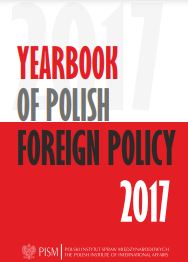Poland’s Policy in the Visegrad Group
Poland’s Policy in the Visegrad Group
Author(s): Veronika Jóźwiak, Łukasz OgrodnikSubject(s): Politics, Regional Geography, Economic policy, International relations/trade, Present Times (2010 - today), EU-Accession / EU-DEvelopment
Published by: PISM Polski Instytut Spraw Międzynarodowych
Keywords: Poland; Visegrad group; foreign policy; 2017;
Summary/Abstract: In 2017, the Visegrad Group (V4) continued to be the most significant tool for the Polish government in terms of regional and, to a large extent, European Union policy. The white paper presented at the beginning of March by the European Commission1 on the future of Europe intensified discussions on potential changes in the EU. Additional encouragement to debate the future of the EU was brought by the May elections results in France. President Emmanuel Macron’s approach to EU reforms was to strengthen the supporters of a “multi-speed Europe”. On the other hand, the ongoing coalition discussions after another victory for Chancellor Angela Merkel’s party in the October parliamentary elections in Germany meant that the approach of the largest EU country to Macron’s has not been clarified. Additional challenges for the V4 countries were to be negotiations on Brexit, finding solutions to resolve the migration crisis, and the amendment of the 1996 directive on the posting of workers.
Journal: Yearbook of Polish Foreign Policy
- Issue Year: 2017
- Issue No: 01
- Page Range: 176-190
- Page Count: 15
- Language: English

